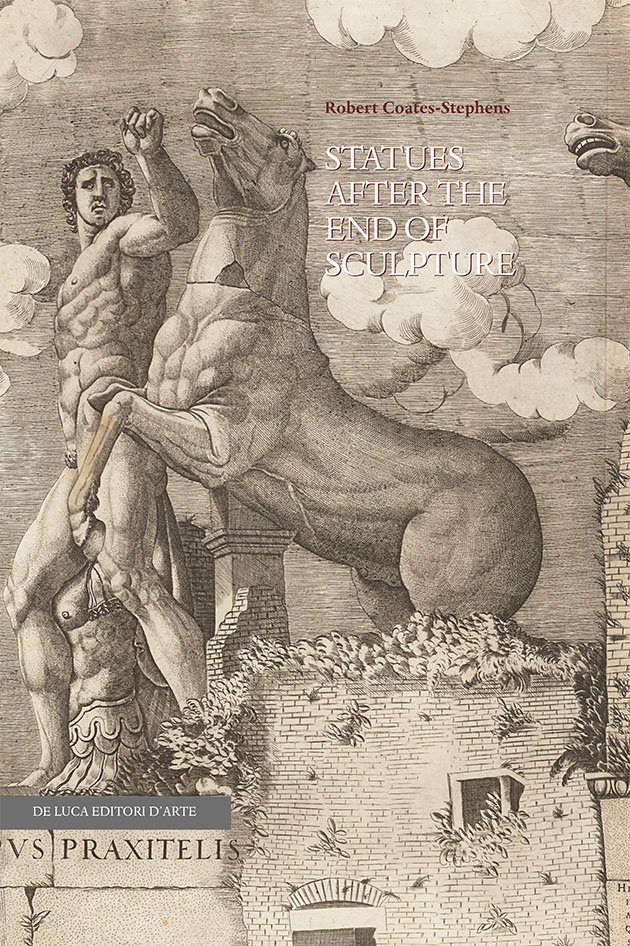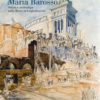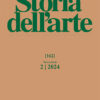-

Robert Coates-Stephens
ISBN: 978-88-6557-649-6
STATUES AFTER THE END OF SCULPTURE
Robert Coates-Stephens€70,00
L'articolo selezionato è già presente nella tua lista dei desideri!
Sfoglia la lista dei desideri
Between AD 500 and 1100 no three-dimensional sculpture was produced in the lands of the former Roman Empire. Rome was the city with the greatest collection of statues, and whilst her inhabitants felt no desire to create new sculpture during the Early Middle Ages, they continued to live alongside a populus copiosissimus statuarum, greges etiam abundantissimi equorum, said by Cassiodorus almost to equal that created by nature. This book documents the alternative population of bronze and stone in the era when the craft of sculpture was in abeyance. It quantifies the surviving statues, and investigates the context and circumstances of their redisplay, reuse, or disappearance. The underlying theme is the impact of ancient art on the medieval imagination. Confronted daily by relics of a lost culture, medieval Romans reacted to the statues in turn with admiration, incomprehension, indifference, wonder, and horror.
Robert Coates-Stephens is Cary Research Fellow at the British School at Rome, where from 2002 to 2024 he directed undergraduate and postgraduate teaching in the archaeology of the ancient city. He has published widely on ancient and medieval Rome, and on the art, archaeology, and urbanism of Italy and the wider Byzantine world. His books include Porta Maggiore. Monument and Landscape (“L’Erma” di Bretschneider 2004) and, with Lavinia Cozza, Scritti in onore di Lucos Cozza (Quasar 2014).
Tra il 500 e il 1100 la scultura tridimensionale non fu prodotta nei territori dell’ex Impero romano. Roma era la città con la più grande collezione di statue e, sebbene i suoi abitanti non sentissero il desiderio di creare nuove sculture durante l’Alto Medioevo, continuarono a vivere accanto a un populus copiosissimus statuarum, greges etiam abundantissimi equorum, che secondo Cassiodoro era quasi uguale a quello creato dalla natura. Questo libro documenta tale popolo parallelo di bronzo e di pietra nell’epoca in cui la produzione scultorea era sospesa. Quantifica le statue sopravvissute e indaga il contesto e le circostanze della loro esposizione, del loro riutilizzo o della scomparsa. Il tema di fondo è l’impatto dell’arte antica sull’immaginario medievale. Ogni giorno a contatto con le reliquie di una cultura perduta, i Romani medievali reagirono alle statue alternativamente con ammirazione, incomprensione, indifferenza, meraviglia, e orrore.
Robert Coates-Stephens è Cary Research Fellow presso la British School at Rome, dove dal 2002 al 2024 ha diretto un corso universitario e postuniversitario di Archeologia della Roma antica. Ha pubblicato ampiamente su Roma antica e medievale e sull’arte, l’archeologia e l’urbanistica dell’Italia e del mondo bizantino in generale. Tra i suoi libri ricordiamo Porta Maggiore. Monument and Landscape (“L’Erma” di Bretschneider 2004) e, con Lavinia Cozza, Scritti in onore di Lucos Cozza (Quasar 2014).
Robert Coates-Stephens is Cary Research Fellow at the British School at Rome, where from 2002 to 2024 he directed undergraduate and postgraduate teaching in the archaeology of the ancient city. He has published widely on ancient and medieval Rome, and on the art, archaeology, and urbanism of Italy and the wider Byzantine world. His books include Porta Maggiore. Monument and Landscape (“L’Erma” di Bretschneider 2004) and, with Lavinia Cozza, Scritti in onore di Lucos Cozza (Quasar 2014).
Tra il 500 e il 1100 la scultura tridimensionale non fu prodotta nei territori dell’ex Impero romano. Roma era la città con la più grande collezione di statue e, sebbene i suoi abitanti non sentissero il desiderio di creare nuove sculture durante l’Alto Medioevo, continuarono a vivere accanto a un populus copiosissimus statuarum, greges etiam abundantissimi equorum, che secondo Cassiodoro era quasi uguale a quello creato dalla natura. Questo libro documenta tale popolo parallelo di bronzo e di pietra nell’epoca in cui la produzione scultorea era sospesa. Quantifica le statue sopravvissute e indaga il contesto e le circostanze della loro esposizione, del loro riutilizzo o della scomparsa. Il tema di fondo è l’impatto dell’arte antica sull’immaginario medievale. Ogni giorno a contatto con le reliquie di una cultura perduta, i Romani medievali reagirono alle statue alternativamente con ammirazione, incomprensione, indifferenza, meraviglia, e orrore.
Robert Coates-Stephens è Cary Research Fellow presso la British School at Rome, dove dal 2002 al 2024 ha diretto un corso universitario e postuniversitario di Archeologia della Roma antica. Ha pubblicato ampiamente su Roma antica e medievale e sull’arte, l’archeologia e l’urbanistica dell’Italia e del mondo bizantino in generale. Tra i suoi libri ricordiamo Porta Maggiore. Monument and Landscape (“L’Erma” di Bretschneider 2004) e, con Lavinia Cozza, Scritti in onore di Lucos Cozza (Quasar 2014).
formato 16,5 x 24, cartonato all’olandese pp. 496; 180 immagini in bianco e nero
edizione in lingua inglese
edizione in lingua inglese



